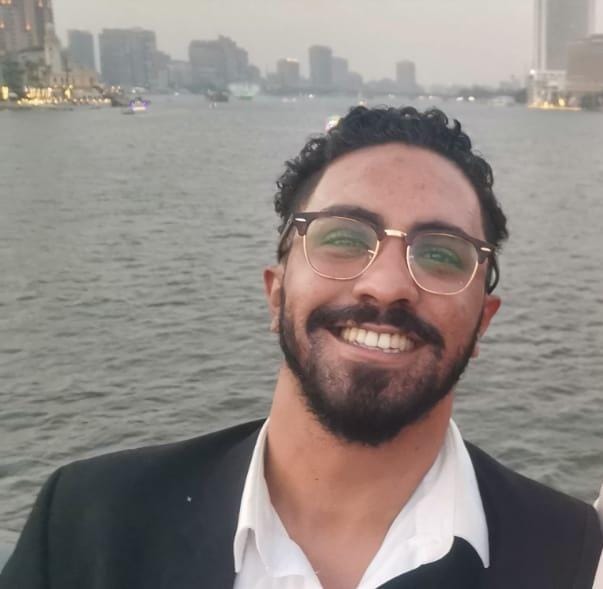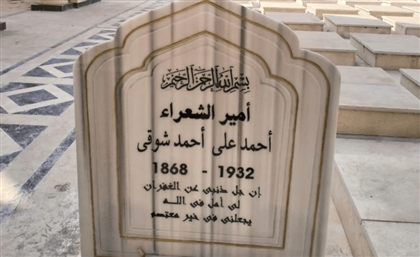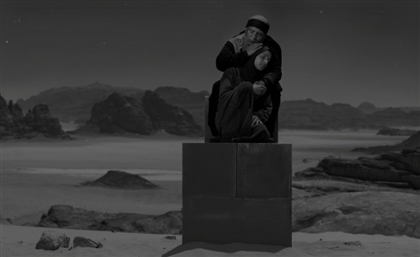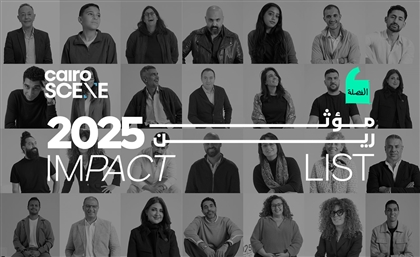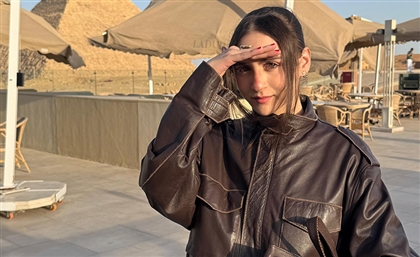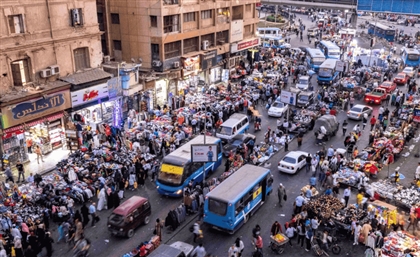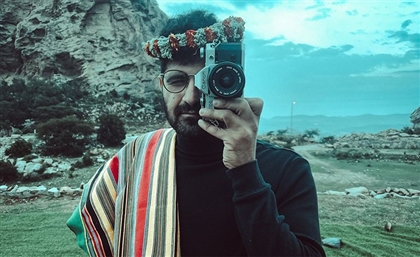‘Empty Rooms’ Art Exhibit is a Reflection on Disability & Unorthodoxy
Egyptian artist WeirDo deals with the isolation, reclusion and loneliness experienced by people with disabilities.
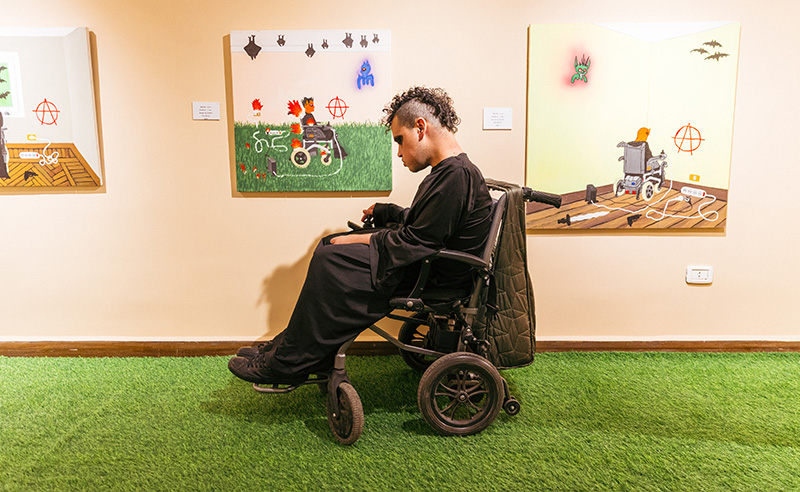
Upon entering the ‘Empty Rooms’ exhibition, one is immediately greeted by a well attended affair, an open space where a number of vibrantly-coloured paintings catch the eye. A mix of Cairo’s hip, grunge and unorthodox youth had gathered to celebrate their friend, Omar Sherif (artistically known as WeirDo) at the opening of his latest exhibition, which deals with the theme of isolation as a person with disability. Greeted at the entrance of the exhibition by another notable Cairene contemporary artist, Omar Gabr (who - not knowing I was due to interview the artist - insisted, “You must interview him, he’s an exciting character”), I was introduced to WeirDo in the inner sanctums of the gallery in Zamalek, where he indulged in a conversation describing his works and his artistic identity. “This exhibition is an expression of my identity, that of WeirDo. It is an expression of the isolation experienced by people with disabilities in a world that seeks to exclude them from daily life, from society and from general socialising,” WeirDo tells CairoScene. The art itself is spectacular, eye-catching and uniquely self-expressionist. Bright colours belie darker themes of loneliness, of absurdism, and of rebellion - recognisable by the ever-present anarchy signs dotted across the exhibition’s works. Apart from the ritzy, bourgeois-sensible exhibitions which are a common occurrence in the galleries of Zamalek, ‘Empty Rooms’ is expressly approachable and welcoming; an invitation into a community pushed to the peripheries of society. Omar Sherif’s oeuvre, expressing his identity as a person with disability through painting, is a reflection of a life lived suffering from Duchenne muscular dystrophy from the age of nine and his subsequent need to be confined to a wheelchair due to his disease. The artist is influenced greatly by the neo-expressionism of the 1980s and in particular of America-Caribbean artist Jean-Michel Basquiat. “Although I have been inspired by a number of artists, and their dedication to true expressions of their identity in whichever way they saw fit, I found it imperative that my art be mine, and truly expressive of my personal journey and struggles,” WeirDo shares. “This subsequent dedication to the development of my own artistic identity led to the development of my identity as WeirDo the artist.” The open plan installation is reminiscent of childhood bedrooms, with soft, but vividly coloured walls hanging WeirDo’s paintings, and sprinkled between figurines of demons, wheelchairs, and old box-set television screens, with metal music wafting in the background. Many of the paintings on display at ‘Empty Rooms’ feature the figure of a disabled, wheelchair-bound figure in isolation in the home, a direct representation of the artist’s grappling with the struggles of his fate. “The exhibition is a reflection of the isolation felt by all people with disabilities. For us, isolation is often a self-defence mechanism against a world that is very often cruel to us. Although, this tendency to isolate ourselves may also lead to self-sabotage, further depressing our situations, and drawing us away from our friends and loved ones,” WeirDo says. The style, themes and figures employed in WeirDo’s works are unorthodox in the Egyptian contemporary arts scene - sometimes demonic and often extremely morose figures of bats, cats and Kalashnikovs represent the artist’s own personal struggle with the establishment. When asked about the ever present symbol of a red circled letter ‘A’, a common graffiti sign of the anarchist movement, WeirDo explains, “The anarchy sign dates back decades, and has been a perpetual symbol of the oppressed. It represents an acceptance and adoption of unorthodoxy, and a rebellion against the common social norms and against establishment views. It is essentially a symbol of doing what one feels like doing, an expression of the true self.” The name of the exhibition, ‘Empty Rooms’, is an indication of the lonely moments spent by people with disabilities in their rooms, in a world which has not adapted to accommodating fully the needs of those who are physically impaired. “As late as the 1960s, universities and other establishment institutions barred the disabled from their gates. Today, venues and institutions still haven’t made practical accommodations for the disabled, forcing us to become recluses, and making socialising a privilege,” WeirDo explains. The fittingly absurd groans of a metallic music filled the air, and the youthful crowd which had come to support the artist’s opening night grew larger by the time I left. The set up of the exhibition reflected the emptiness that the disabled might experience in their personal ‘Empty Rooms’. WeirDo’s art, absurdist at times, a glimpse into a way of life not understood by able-bodied people, is a direct expression of the artist’s personal ethos of rebellion against a world set on the exclusion and isolation of those not deemed orthodoxly acceptable. It is particularly an important addition to the Egyptian contemporary fine arts scene, and an homage to a feeling of anarchy and isolation felt by a myriad of Egyptian youth for numerous reasons, and not particularly confined to the disabled. ‘Empty Rooms’ is on show at Zamalek’s Ubuntu Art Gallery until June 13th 2024.-91561f4d-0ad7-4b3f-a725-b4bc2077ba17.jpg)
-295a1e3c-4ccf-42f3-9bed-9ee0f064f31c.jpg)
-588d5dfa-2bc9-4ee8-9877-df6f6fce692f.jpg)
-c7f4cc04-4d50-4b52-a75d-984210008d35.jpg)
-ec3eda0c-6d66-4559-b9af-6891c3efdb97.jpg)
-6c828a92-a511-4d13-9559-0439405c4f4a.jpg)
-f4fad996-1f27-480f-ad70-7cf5764e359d.png)
-865e0bc7-94f9-48c6-be5e-224c0757e32c.png)
- Previous Article Italian-Palestinian Duo No Input Debuts Eponymous Electro EP
- Next Article Travel Across History on Egypt's Most Iconic Bridges
Trending This Week
-
Dec 23, 2025







